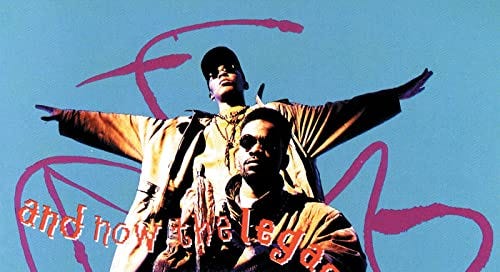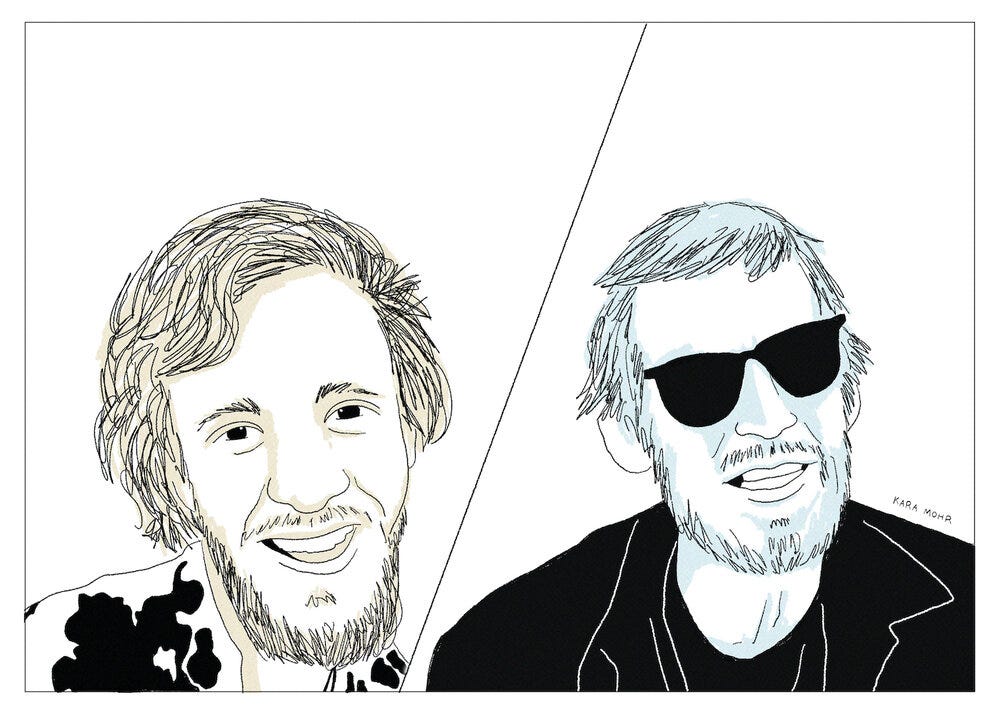“My Definition of a Boombastic Jazz Style” by DREAM WARRIORS
Hip-hop's golden era, jazz samples, a Canadian game show, and making music for your own streets.
I sought beauty through the dust of strife
Pianist Robert Glasper, who would know, says “jazz is the mother of hip hop.” The dominant family trait is an essential swing that reached increasingly abstract expressions, from bebop and free jazz to “chopped and screwed” tracks. Both grew as against-the-grain, underground expressions that shifted the direction of pop music. The relationship was a bit fraught in hip-hop’s adolescence as crate-digging producers looking for something more melodic than funky drum breaks sampled freely from jazz records — emphasis on “free.” By the early ‘90s, an established mechanism for clearing samples became a line of business for artists, labels, and publishers, and jazz and hip-hop publicly embraced each other. A Tribe Called Quest dropped The Low End Theory, which broke out on the strength of “Jazz (We’ve Got)” with its beat derived from Jimmy McGriff’s version of “Green Dolphin Street” by producer Pete Rock. Digable Planets’ “Rebirth of Slick (Cool Like Dat),” built from a sample of “Stretching” by Art Blakey and the Jazz Messengers, was a crossover hit.
In shades of the Birdland scene of the 1950s, where Manhattan’s 52nd Street was the center of the jazz universe, this was initially all going down in New York. Pete Rock’s production on his track with C.L. Smooth “They Reminisce Over You (T.R.O.Y.)” and Nas’s “The World Is Yours,” from the all-time-great Illmatic album, exemplifies how dusty grooves and jazz samples became part of New York hip-hop’s essential grit. Along the way, Blue Note Records flung open its vaults for London’s urbane, clubby Us3, who turned a sample of Herbie Hancock’s “Cantaloupe Island” into the US Top 40 US hit “Cantaloop (Flip Fantasia)” and made the Hand On the Torch album the label’s first to reach Platinum status in the U.S.. In Toronto, duo Dream Warriors had their own thing in mind.
King Lou (Louis Robinson) and Capital Q (Frank Allert) formed Dream Warriors in 1988. Both counted as veterans of Toronto’s nascent hip-hop scene, and they released “My Definition of a Boombastic Jazz Style” to radio independently before being signed to Island Records’ 4th & B’way imprint. The sound of their debut And Now the Legacy Begins is often more playful compared to what was happening 350 miles south, which isn’t to say that it’s slight. Like with De La Soul, their hip-hop reflected different streets. Toronto has been called the most multicultural city in the world. On the album’s “Ludi,” a song about playing a game, King Lou gives an extended shoutout to the composition of his neighborhood:
This one's for Jamaica
Africa
Dominique
Trindad and Tobago
St. Kitts, Bermuda
Antigua, St. Lucia
St. Maarten, and do not forget Montserrat, Nevis
Aruba, Grenada, Guyana, and Cuba
St. Vincent, Angola
Bahamas, Puerto Rico que rico
Dominican Republic and Rio
Martinque and Guadalupe
And Virgin Islands, truly
The sample at the center of “My Definition of a Boombastic Jazz Style” is from Quincy Jones’s “Soul Bossa Nova.” The 1962 song from Jones’s Big Band Bossa Nova featured Lalo Schifirin on piano and Rashaan Roland Kirk on flute. Schifirin went on to write “Theme from: Mission Impossible” and score films like Cool Hand Luke, Bullitt and Enter The Dragon. Kirk was a multi-instrumentalist — often at the same time. Blind since age two, Kirk began touring with bands at 14; he would play two saxophones, if not more, simultaneously, harmonizing with himself. (The breadth and incendiary power of Kirk’s solo work makes for an invigorating, wild ride, with his own takes on swing, blues and free jazz as well as composers from Tchaikovsky and Dvorak to Burt Bacharach.) An accounting of Quincy Jones’s own credits and influence, of course, would of course stretch from The Bronx past Toronto.
You probably know “Soul Bossa Nova” from the Austin Powers series. Given the title of “My Definition of a Boombastic Jazz Style,” it’s a sure bet that King Lou and Capital Q heard it the same way Mike Myers did, as the theme to Canada’s longest running TV game show, Definition. On the show, contestants have to solve hangman-style puzzles with puns for clues; there’s something so fitting in reworking its theme as the basis for exuberant wordplay.
When I kick rhymes there's something said to do damage
Hits so strong even superman needs a hand
So bob your head, dread, as I kick the funk flow
This rhyme is subliminal yet you don't think so
I walk with a gold cane a gold brain and no gold chain
Behind the truth lies there lies a parafix
In the mix is where Dream Warriors go
Define if you will but I know so
There is no definition
You could dance to “Soul Bossa Nova” in a party dress or slim-cut suit, cocktail in hand, and never break a sweat, which was likely the idea. Dream Warriors turn it into a sugar rush. After a stately recitation of the song title, “My Definition” begins with five quick horn blasts that recall nothing so much as the opening to the original late-’60s Spider-Man cartoon theme. It hardly relents from there. Kirk’s flute is the main hook, dipping out just to leave space for the rhymes, which given the song’s tempo, are delivered at a surprisingly conversational pace. It’s so smart and fun; the effect is giddying.
The song was a hit in Canada, where the album went gold, and won the 1992 Juno award for Rap Recording of the Year. “My Definition of a Boombastic Jazz Style” was also a top-20 UK hit and did well across Europe, but the only US charts it dented were college radio’s. Jazz and hip-hop has come a long way since Nice & Smooth proclaimed “Dizzy Gillespie played the sax!” on “Funky for You.” Collaborations combining rappers and hip-hop production with serious players (like Donald Byrd and Roy Ayers on GURU’s Jazzmatazz Vo1. 1) with flourished in the ‘90s, even if too often it felt like dancing where it was unclear who should lead. It has been the next generation who has made jazz + hip-hop sound like they grew from the same organic soil: The Roots, Kamasi Washington with Kendrick Lamar, and especially Robert Glasper — that’s the definition.
25 Song Playlist
"My Definition of a Boombastic Jazz Style" + jazz rap, hip-hop jazz, or whatever you want to call it. “Soul Bossa Nova,” too.
Prime Vs. Past Prime
The folks over at pastpri.me.com asked me to inaugurate a new feature comparing a less popular song by a revered artist and a popular song by less revered artist. What’s more listenable initially? What’s more listenable over time? Will my love of metaphor be used for evil and not good? The first piece compares The Spin Doctors “Two Princes” vs. The Band’s ‘90s comeback, “Remedy.”
I’m Doing My Own Research
Happy Birthday
Happy birthday to David G, whom I haven’t seen in years but who was an early advocate for this project and suggested it to a friend whom I’ve since e-met. Connecting through music is what it’s all about. I hope it was a good one, buddy.
Thank You
Thanks for clicking the ‘like’ heart and passing this newsletter along to friends. You’re the reason why this thing is growing.





